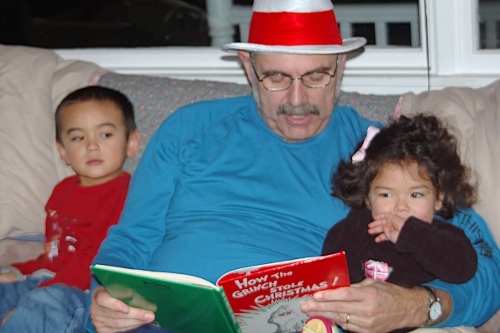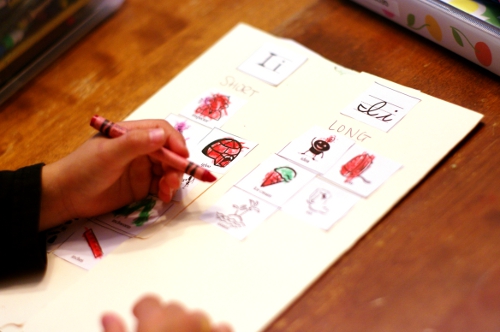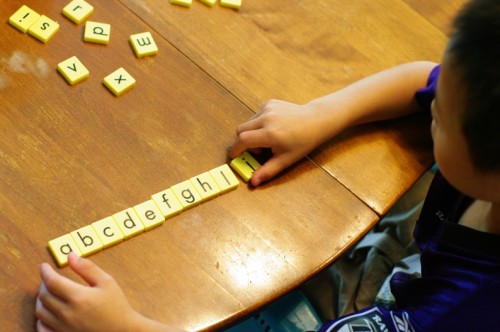advertisement
The following is a post from contributing writer Melissa Corkum and includes affiliate links.
Forget higher math, teaching a child to read has to be the most intimidating part of homeschooling. It didn’t help that our guinea pig, I mean first child, taught himself to read when he was four. When we decided to homeschool, I almost left my daughter in school one more year just so she would come home reading. Keyword…almost.
So, how do you teach a child how to read? Here’s what worked for us.
Pre-literacy skills.
Long before your child can developmentally learn to read, he can develop a foundation that will make him a successful reader. Build vocabulary by reading aloud. In as many situations as possible, point out words and letters as you go. Encourage your child to retell stories to reinforce comprehension. Lastly, create phonemic awareness by clapping out syllables to words, brainstorming rhyming words, and saying words at varying speeds.
Recommended Resources: Reading Rockets
advertisement
There are about 70 phonograms (combinations of letters to make a sound) the English language uses to create words. Each of the 26 letters of the alphabet makes one to three sounds. Then there are combinations of letters which make anywhere from one to six sounds.
Around kindergarten age, I start by teaching the sounds of the 26 letters of the alphabet. The goal is to drill the sounds so deeply that recall is instant. I do this by fully immersing a child into a letter’s sound(s) for an entire week. Everything from science to math and from the books we read to the food we eat revolves around the letter. It’s important that the activities chosen are multisensory as well, so I make sure that we practice saying the sound, seeing the sound, and even writing the sound. Every day we use flashcards to review the sounds we have covered so far.
Recommended Resources: Phonogram Page, Letter of the Week, Confessions of a Homeschooler, ABCs at Home.
Blending and Building.
Once your child knows the single letter phonograms, he can start blending (decoding or reading) consonant-vowel-consonant (CVC) words. To keep it multi-sensory, we use letter tiles to build (encode or spell) CVC words as well as beginning readers such as BOB books.
Our favorite readers are actually from Progressive Phonics (FREE). These unique books are written to be read collaboratively. The adult reads the regular text and the child reads the large, red words. Because there is collaborative reading, the stories are more interesting than “Cat sat” and expose children to better grammar right from the beginning while still allowing them to feel the success of reading. Additionally, the silliness of the stories keeps kids attention longer.
Recommended Resources: BOB Books, Progressive Phonics
Multi-letter phonograms.
At the same time you start teaching blending, you can also start drilling the remainder of the phonograms. Besides drilling them, be sure to point them out as your continue to read aloud to your child. A great spelling program that utilizes the phonograms and spelling rules will complete your child’s toolbox for reading.
Recommended Resources: Spell to Write and Read, Logic of English, All About Learning
There’s no rhyme or reason for how long you should hang out at each step.
Mastery is important and will make sure the next step goes smoothly, but try not to stress about how long mastery takes. I encourage you to follow your child’s lead and make sure you are spending lots of time reading aloud at each stage. While our first child read chapter books at four, we now have a 7-year-old who is just moving into multi-letter phonograms. We knew he was ready when he started trying to read anything he saw and would attempt to spell instead of talk. Now that our little guy is ready and willing and has the tools of reading (phonograms), maybe teaching reading is not as hard as I thought.
Happy Reading!
Melissa is a photography-dabbling, primal-eating, housework-hating, triathlon-trying, homeschooling, black belt-seeking, grace-needing mom to 6 kids ages 6 to 15. In addition to her 7-year-old, she is currently teaching her three non-native English speaking children (ages 12 to 15) to read using the above method. Passionate about orphan and widow care, her family co-founded The Grafted. She blogs about adoption, homeschooling, and life at The Cork Board. You can keep up with Melissa on Facebook, Pinterest, Flickr and Twitter.
—
This post contains affiliate links.
Join 40,000+ Other Awesome People
Subscribe to the Real Life at Home weekly newsletter to get our latest content, exclusive free printables, learning activities, and ideas for celebrating with your kids all year



Great ideas!
We have been using the Logic of English Foundations and it’s core of phonograms has been a lifesaver for my reluctant reader. Thanks for the reference to Progressive Phonics. I like how they reiterate that the Dolch words can be explained by phonogram rules and do not need to be memorized as sight words.
I’m glad you like LOE. I’ve looked into it but had already bought SWR and liked it enough to not switch. I don’t think LOE was as established when I was looking.
Thanks for the information. Teaching your child to read is very important to their future.